Why India's Youth is Falling Behind in Financial Literacy?
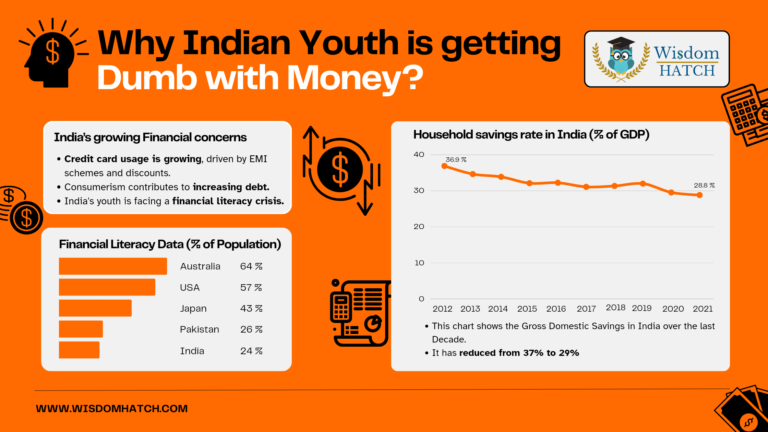
Introduction
In a world driven by the relentless flow of information and the omnipresence of social media, it’s become increasingly apparent that India’s youth is facing a looming crisis – a crisis of financial ignorance.
This isn’t just a personal observation; it’s a fact that even the World Bank acknowledges [1]. The data below says that the Literacy Rate in India is higher than countries like Pakistan. Now, let’s take a look at another chart.
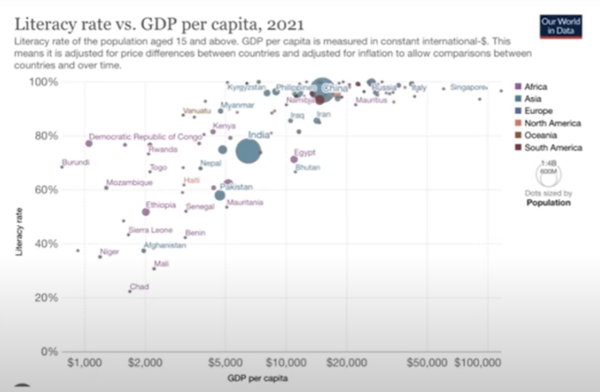
This chart covers the financial literacy in a country [2], and it clearly shows that Pakistan is more financially literate than India.

Keeping this in mind, let’s delve into this pressing issue, understand its gravity, explore the reasons behind this alarming trend, and discover actionable steps for a brighter financial future.
What We'll Cover in This Blog:
- Why is India’s Savings Rate Declining?
- How Are People Allocating Personal Loans?
- What’s Driving the Increase in Credit Card Debt?
- Why Should You Care About Your CIBIL Score?
- How Does Social Media Influence Spending Habits?
- Why Is Consumerism a Financial Pitfall?
- What Are Synthetic Financial Products, and Why Are They Complex?
- Why Is Financial Education Crucial?
- What can you do to circumvent these situations?
The Savings Rate Plunge:
One clear indicator of the problem is the declining savings rate as a percentage of GDP.
It’s crucial to grasp the concept of savings, which is essentially income minus expenses. If you’re earning one lakh and spending thirty thousand, your savings amount to seventy thousand.
The equation is simple: if your salary grows faster than your expenses, your savings increase.
However, the savings rate as a percentage of GDP is dwindling [3].
India’s GDP is growing, but people are spending even faster and undertaking high levels of lifestyle inflation.
This raises questions about the sustainability and sensibility of such financial behavior.
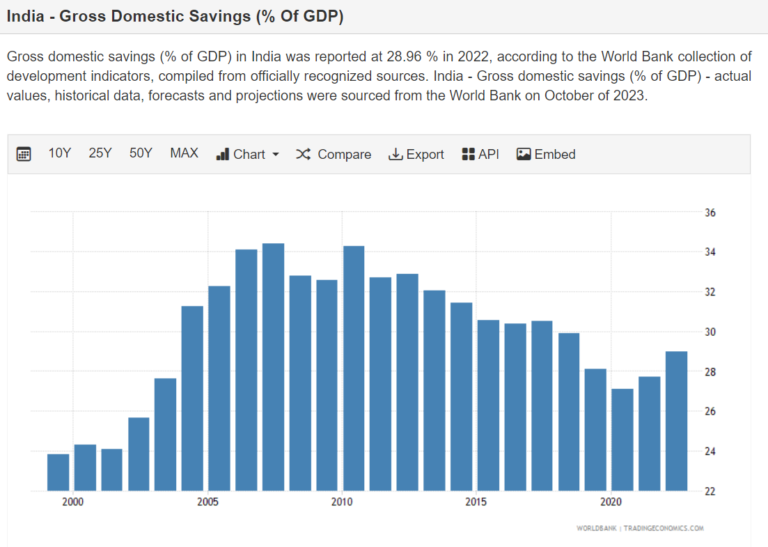
Unwise Borrowing:
A closer look at borrowing patterns reveals a worrying trend. Personal loans are being used for non-critical purposes like buying cars, education, and electronics [4].
When we categorize these expenses into critical and non-critical, it becomes apparent that a substantial chunk of personal loan funds is directed towards non-productive ventures.
For instance, many individuals refinance existing loans, a financially unhealthy practice. And, shockingly, nearly seven percent of personal loans are dedicated to purchasing cars on credit.
It’s worth emphasizing that buying a depreciating asset with a loan doesn’t make financial sense.

The Growing Usage of Credit Card Debt:
The rampant usage of credit cards is another facet of the financial crisis. Approximately 70% of iPhones purchased in India are financed through EMIs [5]. While some can afford iPhones, a significant portion cannot.
As seen below [6], iPhone sales increased by 400% because of EMI schemes and discounts.
Still, they succumb to the allure of cheap credit. This culture of living beyond one’s means is further eroding financial sensibility.

Similarly Credit Card issuance in India has grown exponentially in the last few years and it’s only set to grow faster [7].
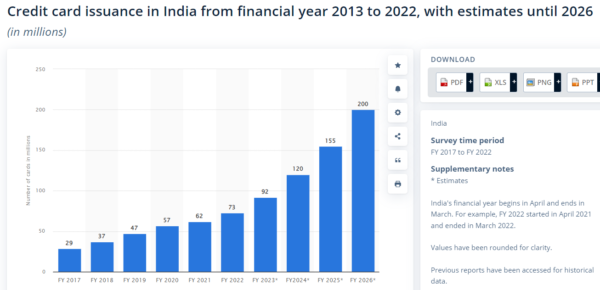
The CIBIL Score Conundrum:
Your financial decisions today affect your future in subtle but significant ways. A prime example is your CIBIL score, which plays a pivotal role when you apply for loans, especially home loans.
Individuals with CIBIL scores above 750 are considered excellent borrowers and receive lower EMIs [8].
However, excessive credit card debt and frequent maxing out of credit limits lead to lower scores, resulting in higher EMIs when it truly matters, such as buying a home.

Personal Retail loans surged by 50% in 2022 [9].
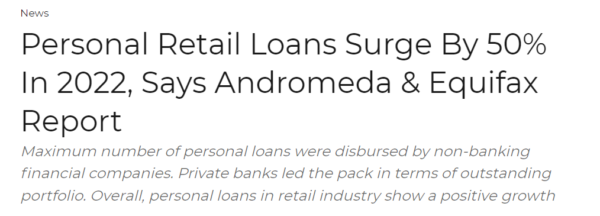
The Role of Social Media:
Social media, particularly platforms like Instagram, fuels a culture of instant gratification. It’s a breeding ground for FOMO (Fear of Missing Out). We see friends and acquaintances enjoying extravagant vacations, buying iPhones, and living seemingly luxurious lives.
This exerts undue pressure on impressionable minds, especially the younger generation, compelling them to spend money they don’t possess.
Consumerism and the Debt Trap:
Consumerism is on the rise, driven by the ease of obtaining credit cards and loans. This phenomenon encourages people to spend recklessly on things they can’t afford, leading to a perpetual cycle of debt.
The pursuit of a bigger house, a more extravagant car, or the latest gadgets often traps individuals in a never-ending race to keep up with an unsustainable lifestyle.
This has led to increase in Household Debt in India over the last decade [10]
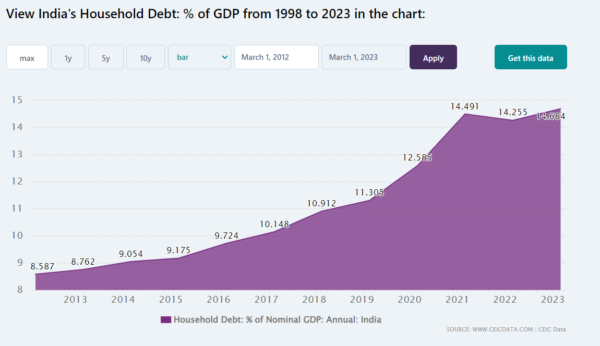
The Complexity of Synthetic Products:
The financial landscape is cluttered with synthetic products and derivatives. These complex financial instruments can be challenging to understand for the average person.
For example the 2008 Financial Crisis was driven by a financial product called Mortgage-Backed Securities and Collateral Debt Obligations (CDOs).
Similarly more such products such as REITS (Real Estate Investment Trusts), BNPL schemes etc. are continuously gaining traction.
Without proper financial education, individuals might inadvertently invest in products they don’t fully comprehend, putting their hard-earned money at risk.
The Complexity of Synthetic Products:
The bottom line is that financial literacy is essential. Finance is a complex subject that cannot be condensed into one-minute reels or simplified for entertainment. It’s a matter of your financial well-being and security.
If you’re willing to spend considerable time researching product reviews for a T-shirt, you should be willing to invest even more time in understanding your financial choices.
What can you do to circumvent these situations?
- Understand that the Consumerist Culture is a means for you to spend your money and it will just keep growing.
- Learn more about Finance (Managing your money and Investing).
- Avoid Stock News, Prioritize Fundamentally Driven Analysis.
- Absorb different narratives and concepts, and then maintain your own viewpoint.
Focus on :
- Risk-Reward and Diversification
- Creating and Hedging your Portfolio
If you are a serious investor and are looking for advanced techniques with a focus on better returns, join my Youtube Community where I give live and timely updates on the Stock Market
Conclusion
The plight of India’s youth in financial matters is a matter of grave concern. The declining savings rate, unwise borrowing, excessive credit card debt, and the influence of social media are converging to create a perfect storm of financial ignorance.
To avoid falling into the trap of irresponsible financial behavior, we must prioritize financial education, make informed choices, and resist the allure of instant gratification.
It’s time to regain control over our financial futures and steer India’s youth away from financial ignorance towards a path of financial wisdom and security.
- India’s youth is facing a financial literacy crisis.
- The World Bank acknowledges the issue.
- Financial literacy in India is lower than in Pakistan.
- Blog covers various financial challenges and reasons behind youth’s financial ignorance.
- Savings rate is declining due to high lifestyle inflation.
- Personal loans are often used for non-critical expenses.
- Credit card debt is growing, driven by EMI schemes and discounts.
- CIBIL scores affect loan eligibility, and many have low scores due to excessive credit card debt.
- Social media promotes instant gratification and spending beyond means.
- Consumerism and easy access to credit cards contribute to increasing household debt.
- Complex synthetic financial products pose risks without proper financial education.
- Financial literacy is crucial for financial well-being and security.
- Recommendations to circumvent financial challenges: understand consumerism, learn more about finance, avoid relying on stock news, focus on risk-reward and diversification.
- India’s youth must prioritize financial education to avoid irresponsible financial behavior and achieve financial security.
[1] https://ourworldindata.org/grapher/literacy-rate-vs-gdp-per-capita
[2] https://www.helgilibrary.com/charts/how-financially-literate-is-your-country/
[3] https://tradingeconomics.com/india/gross-domestic-savings-percent-of-gdp-wb-data.html
[4] https://www.lendingtree.com/personal/personal-loans-statistics/
[5] https://timesofindia.indiatimes.com/readersblog/transformingmanagement/apple-winning-the-market-one-emi-at-a-time-47642/
[6] https://economictimes.indiatimes.com/tech/hardware/apple-takes-india-seriously-as-iphone-sales-increase-by-400-with-the-help-of-emi-schemes-discounts/articleshow/20356579.cms?from=mdr
[7]
[8] https://www.bajajfinserv.in/insights/everything-you-need-to-know-about-your-credit-score
[9] https://business.outlookindia.com/news/personal-retail-loans-surge-by-50-in-2022-says-andromeda-equifax-report-news-219098
[10] https://www.ceicdata.com/en/indicator/india/household-debt–of-nominal-gdp
Ever wondered what we get in return for the taxes we pay in India. Whether the Tax Structure is TOXIC? Check out our Blog post on HEAVY TAXES, But we get NOTHING in return
MUST know BEFORE you become an Airbnb host
Medium Article Preksha Chand edit post MUST know BEFORE you become an Airbnb host Medium Article Preksha Chand edit post MUST know BEFORE you become an Airbnb host Medium...
Make more money from your property: Short-term rental [Airbnb]
Medium Article Preksha Chand edit post Make more money from your property: Short-term rental [Airbnb] Medium Article Preksha Chand edit post Make more money from your property: Short-term rental...
GOA Airbnb Laws: What Hosts Need to Know [2024]
Medium Article Preksha Chand edit post Make more money from your property: Short-term rental [Airbnb] Medium Article Preksha Chand edit post Make more money from your property: Short-term rental...





